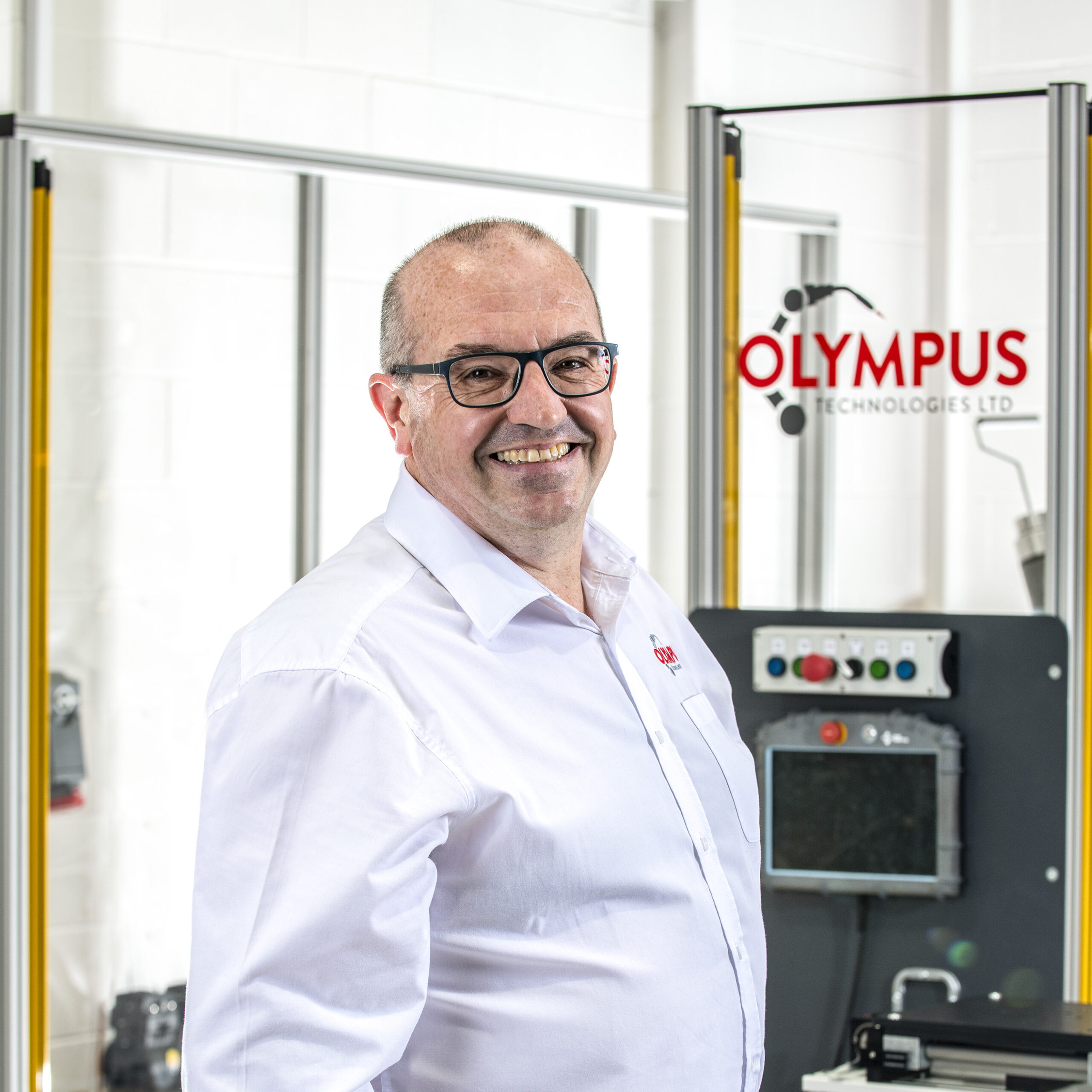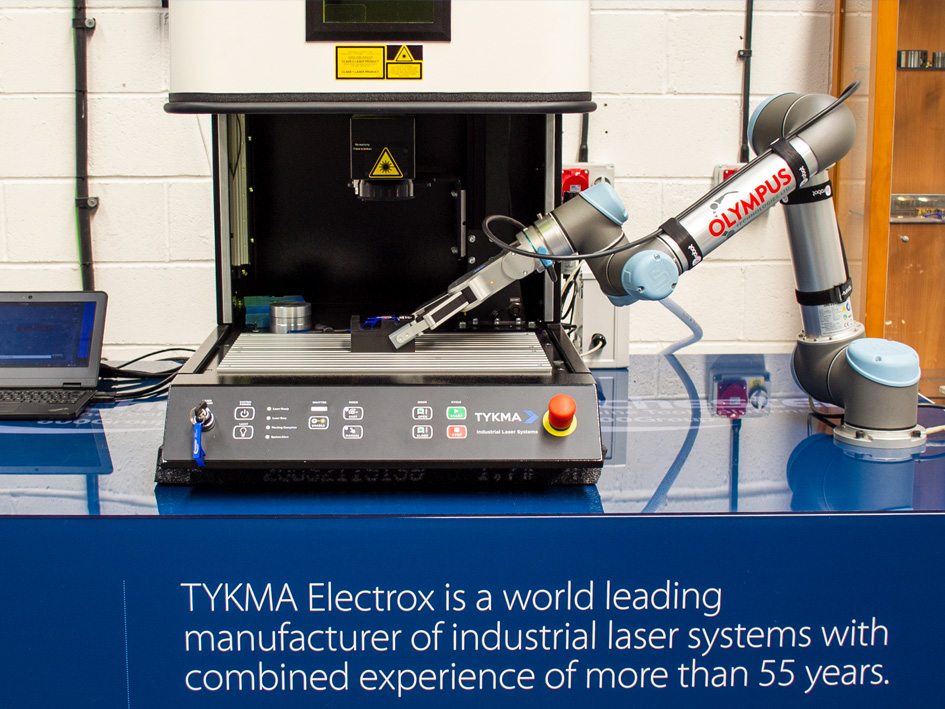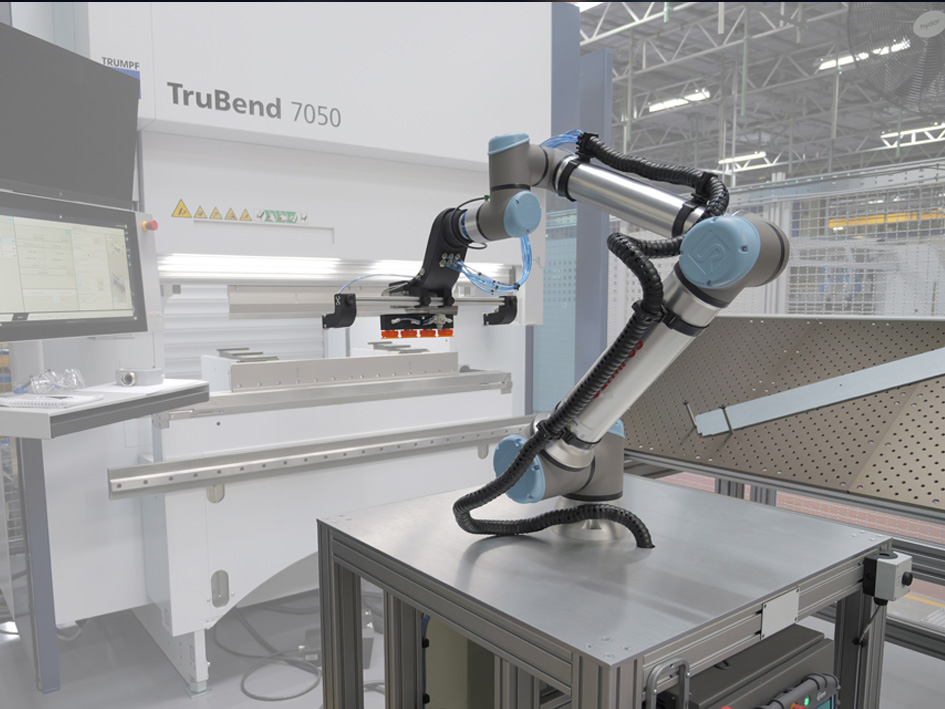The Evolution of Metal Fabrication
Metal fabrication is fundamental to modern manufacturing, combining processes like cutting, welding, and bending operations to shape essential components. Among these, press brake operations are key to forming sheet metal into precise, finished parts.
As industries demand more automation, efficiency, and worker safety, many manufacturers are adopting automated systems. A leading innovation in this shift is robotic press brake tending - a powerful way to modernise the manufacturing process and meet evolving production needs.
What Is Cobot Press Brake Tending?
Press brake tending with robotics involves using a cobot to load, align, bend, and unload metal sheets during brake tending. A typical setup includes a cobot within a robotic cell, fixed stand or mobile trolley, intuitive software, a modular gripper and datuming infeed station (squaring table) to ensure part accuracy.
These systems can operate with an existing press brake or new equipment. They’re ideal for low volume operations, high mix part runs, and manual operations that previously required two operators or extensive oversight. The result is a flexible solution tailored to both large-scale and niche production.
Why Automate Your Press Brake Operations?
Automating press brake processes delivers measurable gains in speed, accuracy, and workplace safety. Here’s how robotic solutions reshape production lines:
Reduce Setup Time and Boost Throughput
With robot programs preprogrammed, robotic cells minimise setup time and keep cycle time consistent. A robot can complete multiple bends without pause, dramatically increasing throughput even during off-hours or shift transitions.
Deliver Consistent Quality at Scale
Maintaining consistent quality is challenging in manual bending operations, where human error and operator fatigue are common. Robotic systems eliminate these variables, enhancing quality control and ensuring formed parts meet tight tolerances from the first to the last bend.
Improve Safety and Comfort on the Floor
Manual material handling often leads to pinch point risks, repetitive strain injuries, and general strain from manual lifting. Shifting tasks to a robotic press or robotic system reduces workplace hazards and enables operators to shift focus toward value added tasks like programming or quality inspection.
Lower Long-Term Costs
Though the initial investment in a robotic press brake system can be high, the ROI becomes clear. Cost efficiency is achieved through reduced labour costs, minimised downtime, and fewer injuries - especially in low volume production where staffing is harder to justify. These tending solutions make operations more cost effective over time.
Integrating Robotic Systems into Existing Workflows
Retrofitting or Starting Fresh
Many robotic press brake setups are built to work with your existing press brake, so full equipment replacement isn’t required. Whether implementing alongside a current machine or as a new robotic cell, adaptability is built in.
Smarter Control with Robot Programming
Using intuitive software, you can optimises setup time, avoids errors, and supports automation with smarter control of the system.
End-to-End Process Integration
A robotic system can be linked with upstream cutting, processing, or assembly stations to enhance overall efficiency. Data exchange across machines creates a connected environment, where one robot might serve multiple tasks or interact with adjacent stations.
Smarter Material Handling for Modern Operations
Beyond bending, material handling plays a crucial role in ensuring fluid operations. A robot picks, aligns, and transports parts with unmatched precision - avoiding jams, streamlining operations, and minimising handling time. This directly enhances productivity and reduces reliance on manual operations.
Manual vs Robotic Material Handling
Key Components Manual Operations Robotic System Setup Time Variable, often lengthy Fast and repeatable Operator Safety Injury risk, manual lifting Improve safety, no fatigue Accuracy Depends on operator Precision every cycle Staffing Requirements Typically two operators One robot handles multiple tasks
Robotic material handling simplifies bottlenecks and supports cost effective workflows - especially important in environments with changing part types or intricate bends.
Scaling with Multi-Machine Robotics
With the right configuration, a single robotic system can support multiple machines. This automation model allows flexible task scheduling and enables one robot to adapt between tools and part types. For facilities managing mixed production, it’s a game-changer for efficiency and uptime.
Before You Invest: What to Consider
Planning for a robotic press setup means evaluating your shop’s readiness. Key factors include:
- Floor layout: Ensure clearance and safety zones for the robotic system.
- Robot type: Choose between industrial or collaborative robots based on task complexity and human proximity.
- Training: Invest in team education for robot programming, maintenance, and updates.
A successful rollout depends on aligning your automation strategy with both technical and workforce readiness.
The Future of Robotic Press Brake Systems
The next wave of press brake automation is being shaped by AI, predictive tools, and sustainability. Intelligent robotic solutions are learning to self-adjust in real time, offering error correction and predictive maintenance to reduce downtime and improve quality.
Automation also plays a role in reducing costs, waste, and energy use - supporting greener, leaner manufacturing processes.
Conclusion: Investing in Smarter Fabrication
Adopting robotic press brake tending is about more than replacing people - it's about reimagining the entire system. By enhancing speed, reducing risk, and elevating quality, these robotic solutions give manufacturers a critical edge.
The shift from manual operations to smart automation empowers your team to focus - not just on throughput, but on innovation.
FAQs
What are the key benefits of using a robotic press brake system in low volume production?
A robotic press brake system ensures consistent quality, improves worker safety, and lowers labour costs, even in low volume production. It allows manufacturers to maintain standards without sacrificing efficiency.
Can I integrate robotic solutions with my existing press brake?
Yes, many robotic systems are built for compatibility with an existing press brake. Whether you're retrofitting or building new, these systems support gradual automation without disrupting your current manufacturing process.
How does robotic material handling improve overall efficiency?
Robotic material handling reduces manual lifting, improves alignment, and eliminates slowdowns caused by human error. This directly boosts overall efficiency, particularly in environments requiring multiple bends or complex part transfers.
What kind of training is required to operate robotic press brake systems?
Operators typically need training in robot programming, troubleshooting, and basic system maintenance. With intuitive software and smart interfaces, learning curves are manageable, especially for teams familiar with automation.
Have you considered upgrading your press brake operations? Get in contact with any questions!














